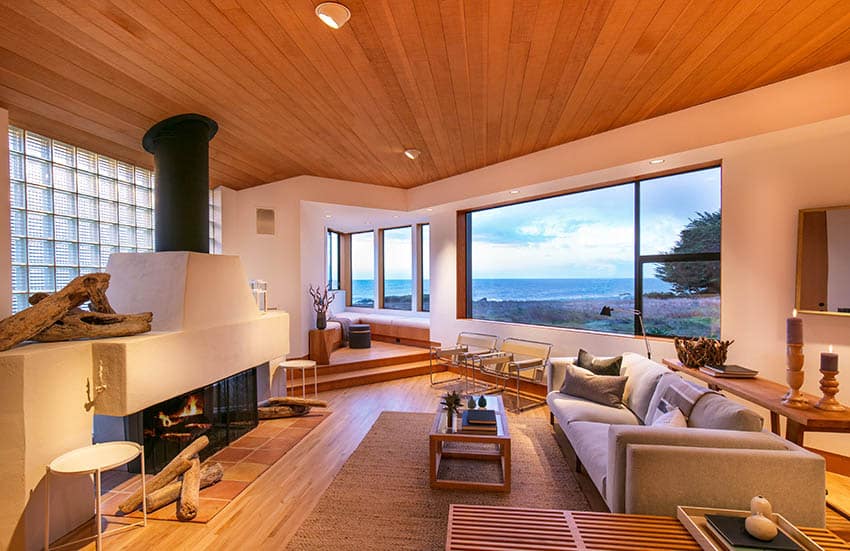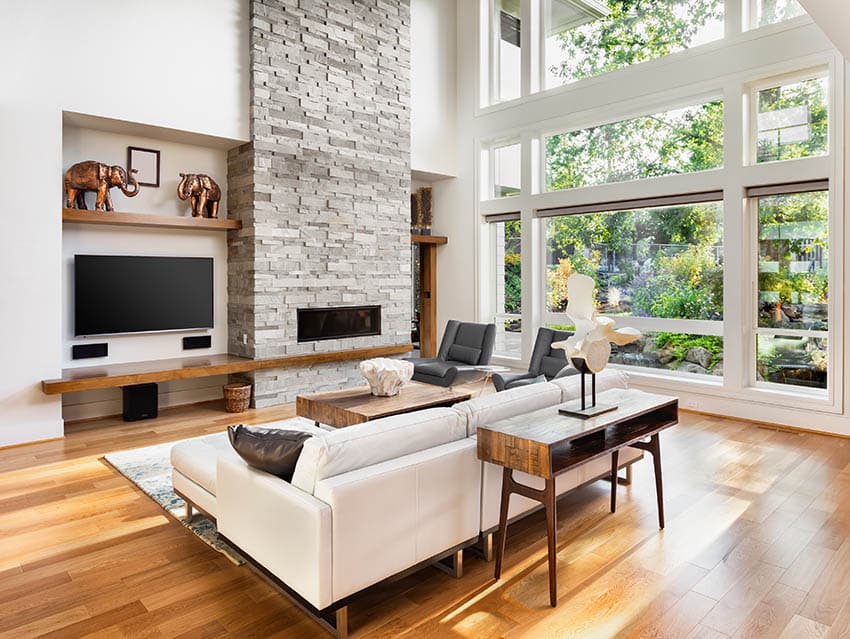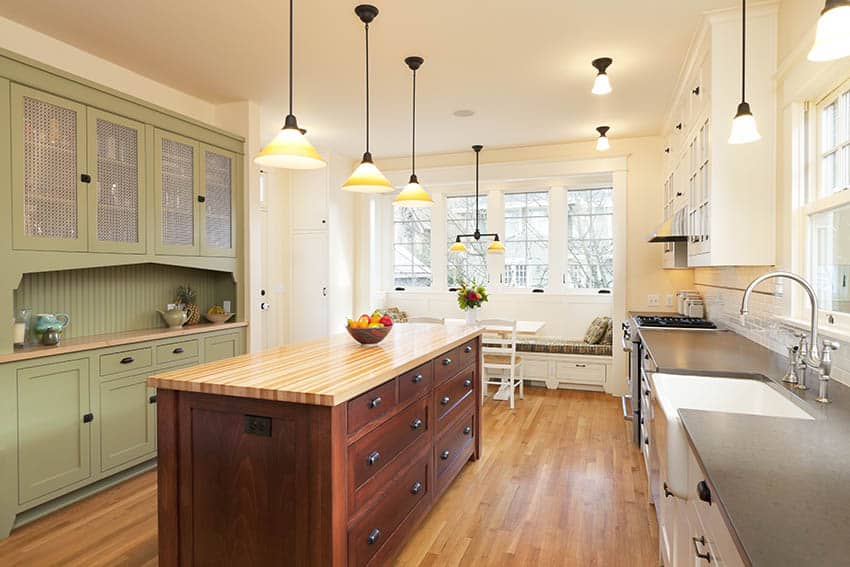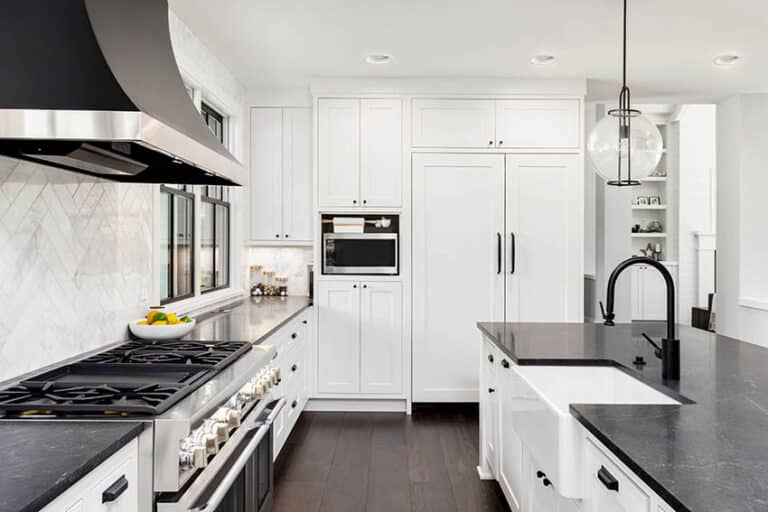Douglas Fir Flooring (Pros and Cons & Design Guide)
Here’s our Douglas Fir flooring design guide including what it is, wood characteristics, grain style, colors, and pros and cons.
Douglas fir is one of the most beautiful and elegant wood flooring options one can ever have in the home. Although it scores low on the Janka hardness test, Douglas fir has many exceptional qualities that make it an incomparable, albeit undervalued, wood flooring choice.
This wood floor can add style to your home, improving its aesthetics and resale value. Learn more about this fascinating wood species to check if Douglas fir flooring suits your lifestyle or not.
What Is Douglas Fir?
The Douglas Fir or Pseudotsuga menziesii is an evergreen treenative to eastern Asia and western North America, towering above the forest canopy some 295 feet or more from the forest floor.
These trees have massive trunks, typically not less than 13 feet in diameter. They are majestic and impressive, popular among lumberjacks as the best timber tree in the North American continent. It’s interesting to note that this tree species is not a true fir.
This tree species is often used as products for hardwood flooring, as its resistant to moisture, durable, and often available at a lower cost than many other options. When utilized for hardwood flooring, its natural colors make for an elegant room design.
People associate Douglas fir with the coming of the Holiday Seasons. As soon as the Thanksgiving Day revelries wane, families start felling Douglas firs for use as Christmas trees.
Not only is it a permanent fixture during the Advent and Christmas seasons. Douglas fir is also an enduring ornament in the landscape of posh properties, providing any lawn or garden a much-needed aesthetic lift.
Is It A Hardwood?
Douglas fir is a softwood based on the Janka Hardness Scale, scoring 660. By comparison, teak solid hardwood flooring has a Janka hardness score of 1,000; red oak, 1,290; hickory, 1,820; and Brazilian cherry, 2,350.
While it is convenient to use the scale to determine which wood is hard or soft, there is more to it. The terms ‘softwood’ and ‘hardwood’ are a commoner’s equivalent to the scientific classifications, gymnosperms and angiosperms, respectively.
Gymnosperms have naked seeds while angiosperms have enclosed seeds. Examples of gymnosperms are firs, cedars, and pines.
Although gymnosperms are softwoods, it does not always follow that they are ‘softer’ than all hardwoods. For example, Douglas fir has a higher Janka score than chestnut (660 vs. 540) hardwood floors. As a softwood, it fetches a price within most homeowners’ budgets.
Wood Grain Characteristics
In general, conifers have small pores, making them closed-grain wood. They also have a smooth texture, making them ideal for furniture and flooring applications. One will never complain of a rough touch, making these surfaces pleasant to lie or sit on.
Douglas fir grain has a light-brown color with reddish or yellowish hints. The clear vertical grain gives way to growth rings that often have darker hue colors, giving the grain stunning contrasting wood patterns.
Quartersawn Douglas fir can produce plain and straight wood grain. On the other hand, flatsawn pieces exhibit wild grain patterns. They make an excellent addition to floors, giving any room a warm vibe and the illusion of movement under the feet.
Is This Wood Variety Good for Flooring?
Despite being a softwood, Douglas fir is an exceptional material for wood flooring. It is a durable and elastic flooring option.
Many people shy away from a Douglas fir as a flooring option because of its low Janka score. However, one must understand how Janka performs the test to determine a wood species’ hardness rating.
The test measures the force required to drive a 0.444-inch steel ball midway through the wood. For example, one will need 1,375 pounds of force to embed the steel ball through an Australian cypress. The average Douglas fir needs 660 pounds of pressure to push the steel ball halfway.
Luckily, there are at least six known species of Douglas fir, each having a different Janka score. For instance, the Montana Douglas fir scores 770, requiring 770 pounds of pressure to drive the steel ball midway.
As such, unless a 300-pound person has a 400-pound steel chair, Douglas fir flooring should hold. It is ‘hard’ enough for most modern floors.
If one is wary about this, one can always look at Pacific Northwest homes of the early 20th-century. These properties have Douglas fir flooring, and many of them still stand to this day.
While Douglas fir flooring is on the softer side of the range, they do have unique characteristics that many homeowners overlook. For starters, Douglas fir is surprisingly elastic. One can bend it to shape and it returns to its original form when needed. It will never break, unlike brittle hardwoods.
Douglas fir also has excellent ratings for compression, shear, and parallel-to-grain characteristics.
Homeowners who want to reinforce their Douglas fir wood floors can add texturing options, including hand-scraping, circular san kerfs, and wire brushing. These techniques add a rustic look to Douglas fir’s natural elegance.
Douglas-Fir Wood Floors Pros and Cons

- Smoother texture than other wood floor options
- Simpler grain patterns for a more elegant look
- Sufficient strength for most wood flooring applications
- Exceptional durability with proper care and maintenance
- Surprising decay resistance when applied with the correct wood treatments
- Douglas Fir is a fast growing wood species and environmentally friendly
Cons of Douglas Fir Wood
- More prone to scratches, scrapes, dings, and dents than harder wood floors
- May require polish or paint to maintain its beauty in harsh sunlight
- Can be expensive to find if you live in an area where Douglas Fir is not present
Engineered Wood Flooring
Homeowners who love the elegance and durability of Douglas fir but cannot live with its susceptibility to scrapes and scratches can always opt for Douglas fir engineered wood flooring. The process optimizes the unique characteristics of the principal wood component.
Engineered wood floors can come in different options. Laminated veneer, Douglas fir plywood, chemically densified wood, and laminated timber are popular, especially among the hip crowd.
Manufacturers of Douglas fir engineered wood flooring materials consider the softwood’s inherent characteristics. They strengthen or reinforce these characteristics using advanced technologies. For example, lamination can improve the Douglas fir’s scratch resistance.
Finger core construction can also lend Douglas fir flooring exceptional stability, reducing the constant contraction and expansion of wood with temperature changes.
Wood ply construction can also improve Douglas fir’s pressure resistance, bumping its strength and making it an exceptional choice for many wood flooring applications.
Douglas Fir flooring Conclusion
There are many reasons why 19th and 20th-century homes favored Douglas fir wood for their flooring options. With proper care and maintenance, this floor option can last more than a century, giving one’s home timeless elegance that very few wood flooring options can match. When considering the price, its cost isn’t prohibitive and many find the installation straightforward.
While it has a modest wood hardness rating, Douglas fir is an excellent flooring option, especially engineered wood. It is the perfect combination of natural beauty, flexibility, and durability modern families can take advantage of for many decades.
For more content like this visit our gallery of oak hardwood floors.










